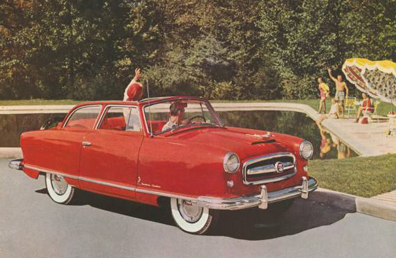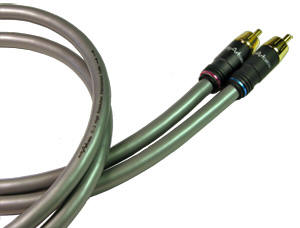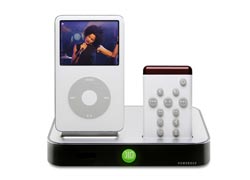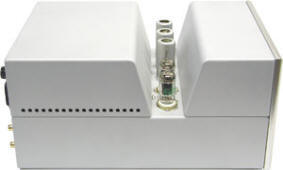|
You are reading the older HTML site
Positive Feedback
ISSUE
23
Audio Ramblings - Why we can't make new
friends, Audio Art cables, and the Artemis PL-1 phono stage
There is simply a lot of good stuff out there—audio-wise—for us to go after. That is, the audiophile or music lover (are they one in the same? …sometimes I wonder) can find really good gear and whatnot for not so much cash. On the other hand, one of the main points of contention for why the younger generation is not joining our ranks is that stuff is absurdly expensive or the cost-to-value ratio is obscenely skewed in the wrong direction, and that if you go cheap, you get cheap. Truth is we fail to see that the real reason is simply that …well, that it is not simply any one reason. There are as many reasons why the younger generation is not coming on board as there are members of the younger generation, and to assume that it is because of any one thing shows an ignorance of the social-personal complexities of our society. Many of which this industry has no control over. I would, though, like to suggest that some things we do have control over is marketing, marketing, and marketing. Let us be honest, we market to ourselves. We market a perception of audio-geek-dom. We market that high-end has to be expensive to be really good and appreciated. We market that this stuff is complex and tweaky. We market that it is for men—predominately older, white, and conservative in ways that is not attractive to the more style-conscious, what-is-in, what-is-right, what-is-acceptable generation (e.g. the music, the attitude, the personas, etc.—we seem to have it all wrong!). What we market is big and imposing—visually—and aesthetically devoid of style (most, but not all). We simply market to keep it exclusive. You want to attract younger people to audio? Make it attractive, make it accessible, and make it desirable. Simple as that. Like the Zu Cable guys... now there is a prime example of people who understand how to reach a WAY broader audience. One that is young and hip—like Zu. One that the industry needs to stay going—like Zu! Then there are people like Josh Ray of SonicFlare, who are taking this on by going after the iPod generation. His site is all about getting the word out to people his age (early 20s) that it does not have to be expensive, it does not have to be about older white guys sitting around by themselves listening to audio-drivel, it does not have to be complex, and that it does not have to exclude your interests—your wants and needs! His site is linked to the sites that the younger people (like we used to be) flock to for music and information—music sites, iPod sites, gadget sites, etc.
In some ways, this was very much a DBX test (not
really, but sort of…), so any real differences would be difficult to
discern due to the brief comparisons—all we could hear was how much they were
alike, which is what a DBX test was designed to show. After Josh left, I spent
more time with the IC-3 in the system and realized that while it is a very good
cable for the money, differences between it and the AM cable were all about
refinement, more refinement, and space. The AM cable simply offered a way more refined
presentation (less grit and grain, much smoother and silkier midrange and
treble, more palpable images, etc.), was much more dimensional and airier, and had greater bass weight and
dynamics. Then again, it costs 25x times more
Audio Art also offers the IC-1, which is an all copper cable—the IC-3 is silver over copper—for $39. This is even a better value than the IC-3, though it offers less resolution and presence than the IC-3—silver versus copper sort of thing. The IC-1 is more forgiving and has that solid copper presentation—a richer fuller sound. Either is a good bet, just a different slice of the sonic pie.
Anyhow, yes there is good stuff out there to attract the newbies that just may keep the audio-cycle a'turning! We just need to get the word out that the stuff exists, that one does not have to sacrifice eating, that they can fit into one's life-style, and that you can still be cool too. Check out SonicFlare and you will see what I am talking about!
|


 Then there are the people at
Then there are the people at

 Let me ramble off a bit here …I mentioned earlier
the Artemis PL-1 phono stage, and while it does not fall into the realm of "just
what we need to offer to attract new people to high-end audio", it certainly
is worthy of an audition by anyone looking to step up the proverbial ladder to
audio nirvana. Compared to the PhD by Sutherland, the PL-1 is more dynamic and
bigger sounding in the sense of scale and presence. While not sounding like a
tube preamplifier—make that the stereotypical tubed preamplifier of yore—PL-1 has more of a solid-state presence, being big and bold, with very good
drive and slam. I did prefer overall the PhD as it was more refined and simply
there when listening to our LPs. That is the Sutherland was quieter and
offered less colorations or artifacts within the sonic tapestry as
compared to the AC fueled PL-1. While these colorations and artifacts were
subtle and not overt in any way, the PhD has more of what we want in our music
than the PL-1. Even so, I recommend the PL-1 to anyone who wants to hear just
how good a tubed phono-stage can be had for a reasonable amount of cash by
today's audio standards.
Let me ramble off a bit here …I mentioned earlier
the Artemis PL-1 phono stage, and while it does not fall into the realm of "just
what we need to offer to attract new people to high-end audio", it certainly
is worthy of an audition by anyone looking to step up the proverbial ladder to
audio nirvana. Compared to the PhD by Sutherland, the PL-1 is more dynamic and
bigger sounding in the sense of scale and presence. While not sounding like a
tube preamplifier—make that the stereotypical tubed preamplifier of yore—PL-1 has more of a solid-state presence, being big and bold, with very good
drive and slam. I did prefer overall the PhD as it was more refined and simply
there when listening to our LPs. That is the Sutherland was quieter and
offered less colorations or artifacts within the sonic tapestry as
compared to the AC fueled PL-1. While these colorations and artifacts were
subtle and not overt in any way, the PhD has more of what we want in our music
than the PL-1. Even so, I recommend the PL-1 to anyone who wants to hear just
how good a tubed phono-stage can be had for a reasonable amount of cash by
today's audio standards.